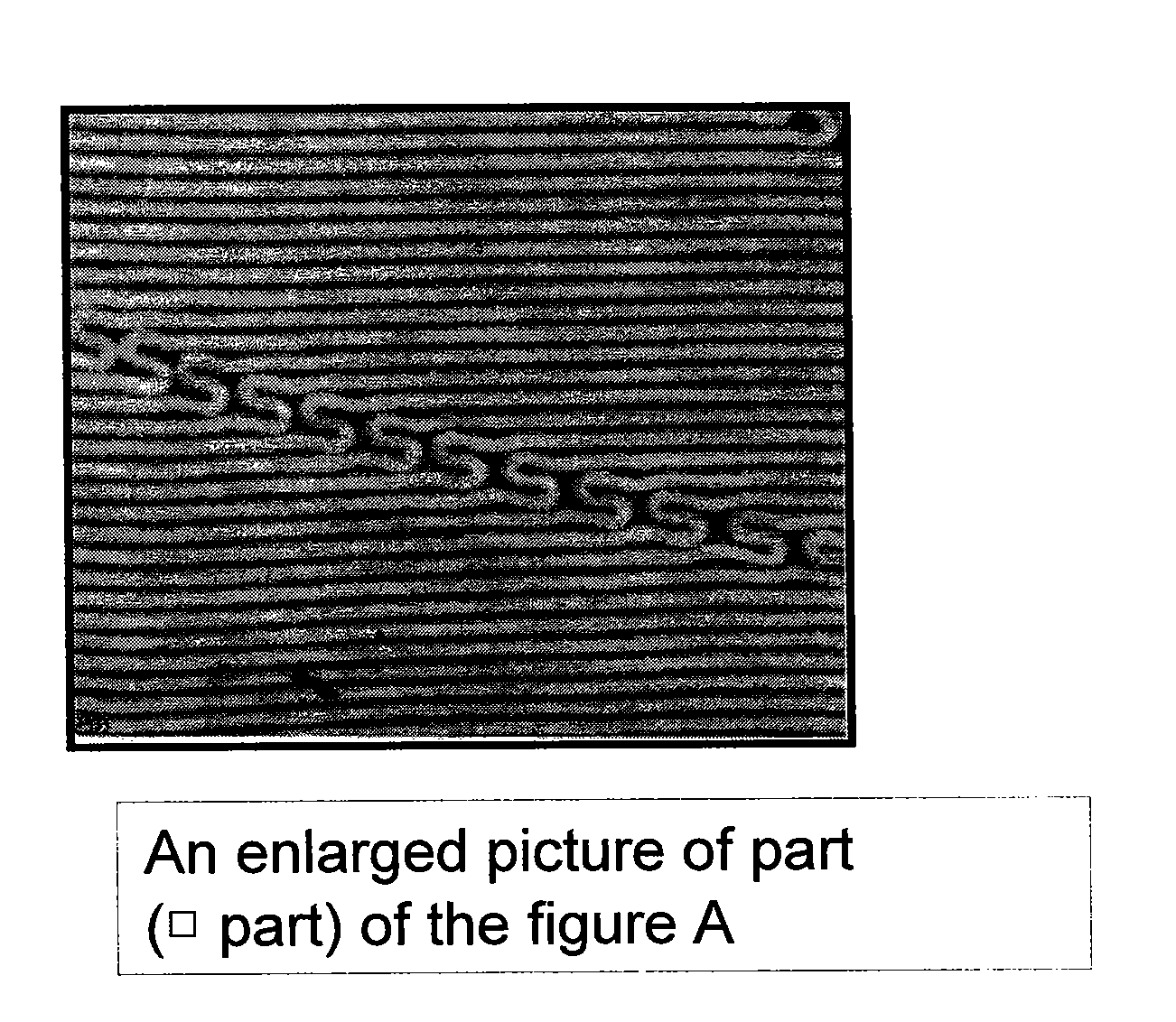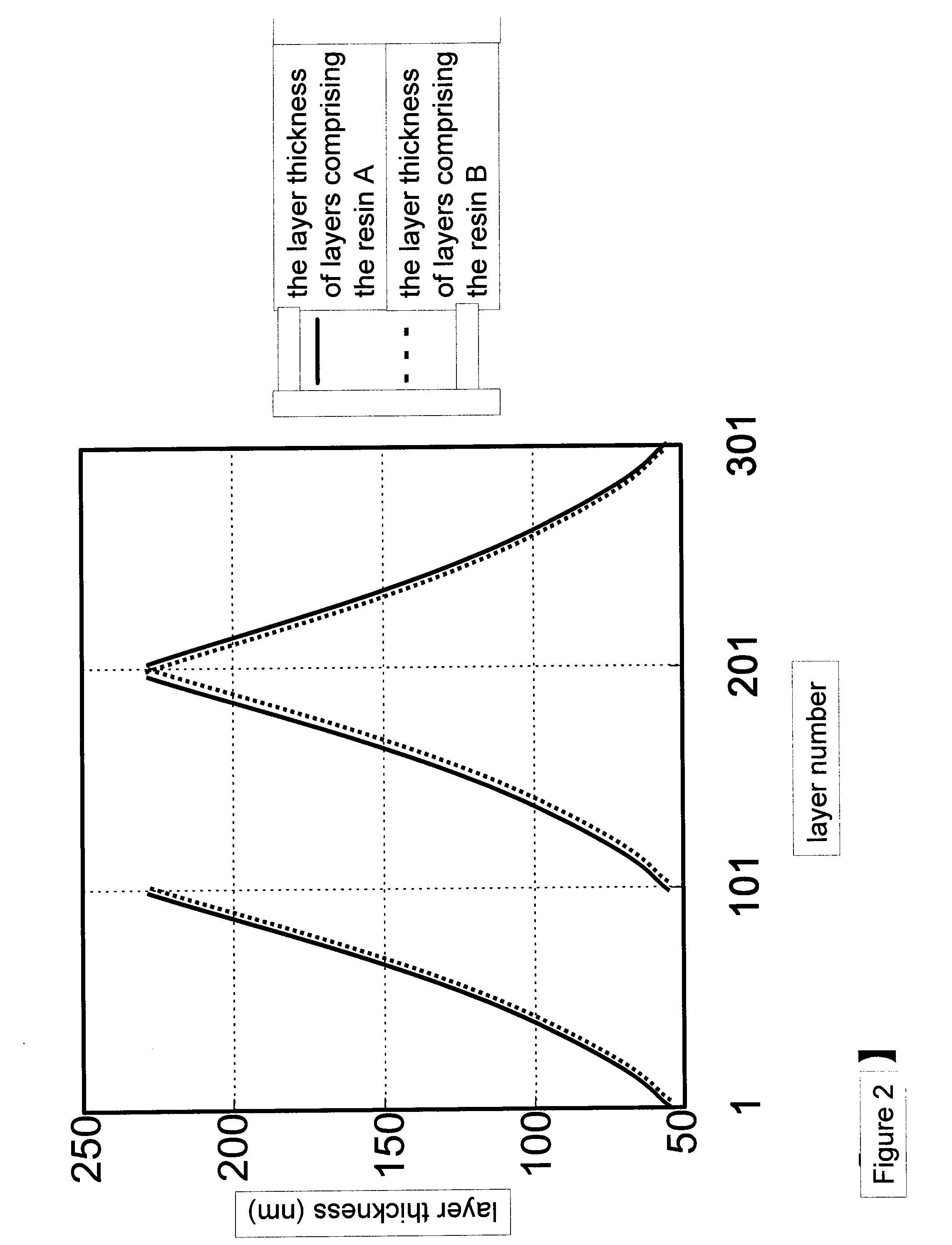Laminated film and molding and reflector
a technology of laminate film and reflector, applied in the field of laminate film, can solve the problems of radio disturbance, affecting the quality of the product, and the inability to easily perform recycling in some cases, and achieve the effect of no warping or washout, and excellent recycling properties
- Summary
- Abstract
- Description
- Claims
- Application Information
AI Technical Summary
Benefits of technology
Problems solved by technology
Method used
Image
Examples
example 1
1. Synthesis of Resin B
[0091]Each of 56.1 parts by weight of dimethyl terephthalate, 24.8 parts by weight of dimethyl 1,4-cyclohexanedicarboxylate having a cis / trans ratio of 72 / 28, 47.2 parts by weight of ethylene glycol, 33.5 parts by weight of spiroglycol, 0.04 parts by weight of manganese acetate tetrahydrate, and 0.02 parts by weight of antimony trioxide was weigh and placed into a transesterification reaction apparatus. The content was dissolved at 150° C. to be stirred. Then, a temperature of a reaction content was slowly raised to 235° C. with stirring to distill methanol. After a predetermined amount of methanol was distilled, an ethylene glycol solution containing 0.02 parts by weight of trimethylphosphoric acid was added thereto. After trimethylphosphoric acid was added thereto, the mixture was stirred for 10 minutes to complete a transesterification reaction. Thereafter, the transesterification reaction product was transferred to a polymerization apparatus.
[0092]Then, pr...
example 2
[0098]Example 2 was performed in the same manner as in Example 1 except that polyethylene naphthalate (PEN) having an inherent viscosity of 0.67 was used as the resin A. The thickness of the resulting film was 100 μm. The obtained results are shown in Table 1. The resin A of Example 2 was polymerized in the same manner as in the resin A of Example 1 except that 100 parts of dimethyl 2,6-naphthalanedicarboxylate and 60 parts of ethylene glycol were used.
example 3
[0099]Example 3 was performed in the same manner as in Example 1 except that a polycarbonate resin (PC), TARFLON LC1700 manufactured by Idemitsu Kosan Co., Ltd., was used as the resin A, and a polymethyl methacrylate resin (PMMA), SUMIPEX LG2 manufactured by Sumitomo Chemical Co., Ltd., was used as the resin B. The thickness of the resulting film was 100 μm. The obtained results are shown in Table 1.
PUM
| Property | Measurement | Unit |
|---|---|---|
| thickness | aaaaa | aaaaa |
| band width | aaaaa | aaaaa |
| thickness | aaaaa | aaaaa |
Abstract
Description
Claims
Application Information
 Login to View More
Login to View More - R&D
- Intellectual Property
- Life Sciences
- Materials
- Tech Scout
- Unparalleled Data Quality
- Higher Quality Content
- 60% Fewer Hallucinations
Browse by: Latest US Patents, China's latest patents, Technical Efficacy Thesaurus, Application Domain, Technology Topic, Popular Technical Reports.
© 2025 PatSnap. All rights reserved.Legal|Privacy policy|Modern Slavery Act Transparency Statement|Sitemap|About US| Contact US: help@patsnap.com



